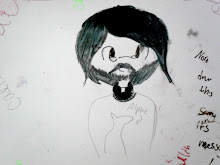Santiago de Chile is, in this urban appreciator´s opinion, one of the most thoroughly pleasant major cities in the world. It´s a city of 6 million, but if it weren´t for seeing how it sprawls from the vista on Cerro Cristobal, you´d never guess it. It´s compact enough to navigate the downtown area on foot, it´s got excellent representation of about every major school of architecture in the Americas from the colonial period on to the present, and it´s got one of the best public park layouts of any world city. The entire riverfront, from Puente Cal y Canto on up through Providencia, is public park, complete with trees in fall foliage, marble and bronze monuments to the heroes of Chile´s past, and (to remind you that this is South America) people making out. Across the river is the Parque Municipal, which winds its way up Cerro Cristobal - you have your choice of gardens and wooded areas to pop into, or you can take the funicular or the cable car system up to the top, which features a shrine devoted to the Immaculate Conception.
The city´s museums leave nothing to be desired, either; the Museo Chileno del Arte Precolombino is one of the finest museums I´ve been to - not too big, not too small, and extremely well put-together. It´s also the only museum I´ve been to on this continent where I´ve preferred reading the English entries on the museum pieces to the Spanish...typically, the English translations range from "comically bad" to "unreadable," and so I just stick to the Spanish.
As for getting around, the city´s metro is one of the world´s best - stations are perfectly distanced, and unlike a lot of cities (I think immediately of Rome), there are enough lines going in enough directions to make it possible to get anywhere in the city in just a short ride on the subway. I didn´t even need to try to the bus system; the metro was that good.
Santiagueno food? Amazing. Pastel de choclo (a super amazingly good casserole made with ground beef, olives, chicken, boiled egg, and corn), fresh grilled fish, seafood empanadas, barras lucas (basically, the closest thing to a Philly cheese steak you´ll find outside of Pennsylvania), and you can wash it all down with good Chileno beer.
But...there´s another Santiago that I walked through, north of the river between Avenida Independencia and the other side of Mercado Vega Central. This is the Chile of people walking into the church where you´re sitting in prayer and telling you, not asking you, to give them 100 pesos (about twenty cents U.S.). This is where the shade comes from run-down apartments and Asian-run thrift stores, not from meticulously maintained shade trees. This is where the streets smell like a mixture of stale piss and rotting vegetables outside the market, and where the average person on the street looks less like a European with a little bit of Indian blood and more like an Indian with a little bit of European blood. And, I wasn´t even in that bad of a neighborhood - Santiago, like most major cities in Latin America, has a pretty sizeable ring of slums and shanty towns on its outskirts.
I see that reality every day in Montevideo - I go from a major commercial avenue in the city center to a slum every day for work. But, in Montevideo, it´s less jarring - the city has plenty of nice neighborhoods, but even certain nicer parts of Montevideo feel old and tired because there´s just not money in the country to build and maintain things the way there is in Chile, or even Argentina. Accordingly, those beautiful tree-lined avenues between Avenida 18 de Julio and La Rambla just keep feeling a little bit older and older every year. Chile, however, is not Uruguay. It has an incredibly robust economy, and has pulled it´s way up to almost First World standards of living in the past decade. It has new subway cars, shiny office towers, brand new this-es and brand new thats.
But for whom? A huge segment of Chile´s population lives below the poverty line, and while that number is decreasing, the same sort of runaway class separation that free trade capitalism promotes looks to be taking place - "hey, you stay on your side of the river with your produce market and let us do the big-kid work of finances and trade, and maybe we´ll come visit you when we need some cheap squash...maybe." Two worlds, divided by a river; maybe someday that bridge at Cal y Canto will feel a little more bilateral.
Tuesday, April 8, 2008
Subscribe to:
Post Comments (Atom)

No comments:
Post a Comment